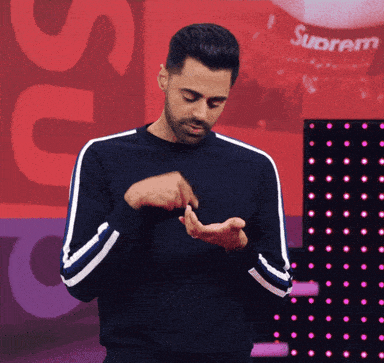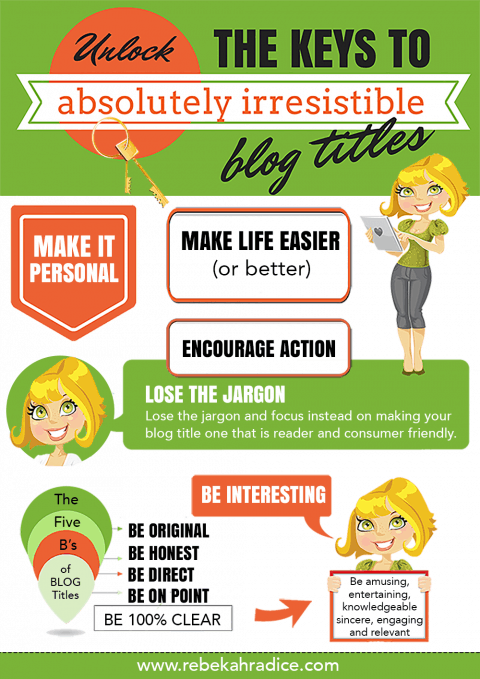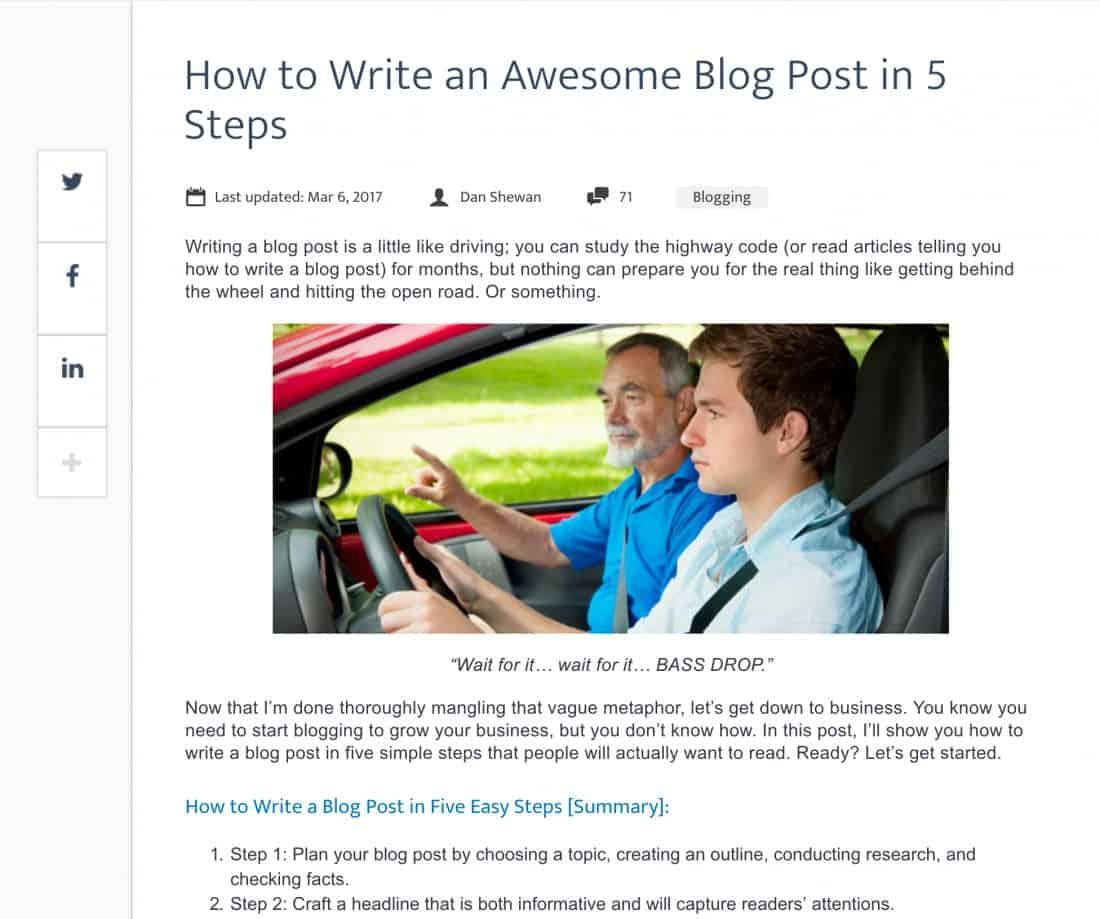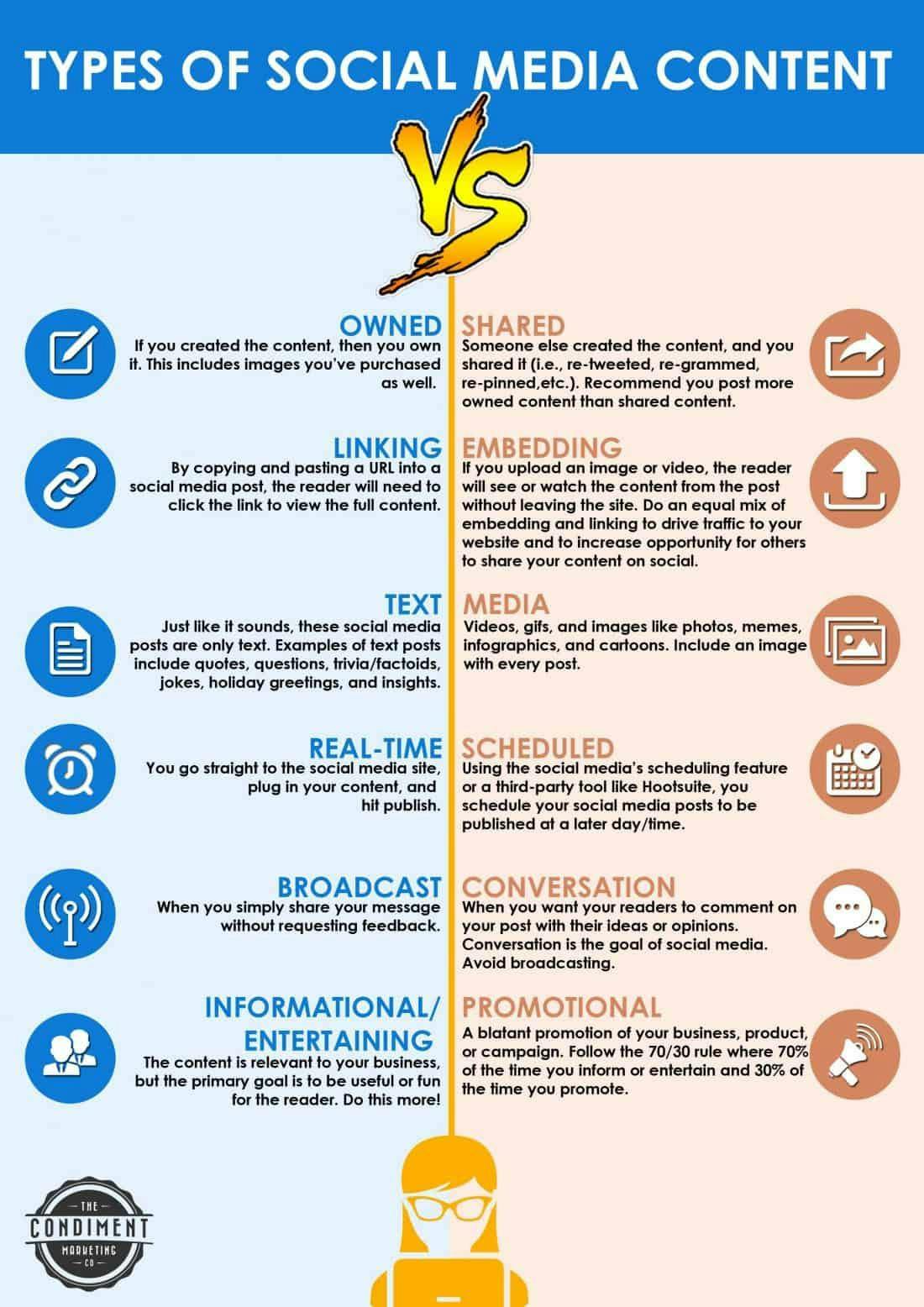Wonder what types of social media content to create? Not sure what posts on social media will engage and inspire your audience?
There's no doubt about it, sharing social media content that captures attention can be challenging.
Not only does it need to resonate, but your content must be compelling, relevant, and easy to consume.
But knowing where to begin, especially in an online world where attention is at a premium, can feel overwhelming.
That's why I've pulled together the 5 types of social media content you need to create.
Not only will it simplify your content strategy, but they also make it easy to tie each content type to your current strategy. That way, you can instantly make a bigger impact.
Oh, and don't forget to grab the infographic from Condiment Marketing at the end!
1. Visual content (media, owned, informational/entertaining)
It isn’t surprising that image-rich content is one of the most shareable types of content. After all, it’s one of the longest standing forms of communication, dating back to the beginning of time.
Cavemen used images to tell their story, while Egyptians decorated entire rooms in vibrant color, guaranteeing a continuation of life.
Today, images are used on social media to tell a story, extend a vision, and leave an indelible mark in the mind of a consumer.
When you look at the history and massive success of Facebook, Instagram, and Pinterest, it's easy to see that visual content has proven to create massive staying (and stickiness) power.
Use pictures that support the mission and purpose of your business. As the saying goes, a picture is worth a thousand words.
That means the images you share must have a substantial impact on your customer, engaging both their heart and mind.
Not sure where to begin?
Look to your competition. Are they sharing creative visual content that their social media fans and followers eat up? If so, what can you learn from that?
Dairy Queen knows how to use visual content to keep their audience happy and enthusiastically engaged.
They've found their visual content rhythm and groove. The goal for you is to nail yours.
2. Video / GIF / expiring content (media, real-time, promotional)
If you're still in doubt whether video content is the future of social media marketing, all you have to do is blink. No matter the social network, a simple scroll through the newsfeed will inundate you with video content.

While video has quickly become an efficient and convenient way to communicate, it’s also highly personal.
It draws in viewers, allowing them to connect with you and your brand on a much more intimate level. And there are no signs that our consumption of video is slowing down.
By 2022, it's estimated that the number of videos crossing the internet per second will be close to 1 million.
That makes your use of video more important than ever. But let's not hastily rush into it.
The video you decide to create must feel natural for your brand. It should tell your story, in your voice, and with your tone. A mismatch with your current message is a recipe for disaster.
You also want to make sure you include the right words and actions. Not sure what those would be for your brand?
Do your research. Look to your keywords and hashtags across each social channel.

As much as the perception to create a video is expensive, that's no longer the case. With tools like Promo by Slidely and Animoto, you can create beautiful videos in a matter of minutes.
3. Infographic content (owned, informational/entertaining)
If you haven’t started using infographics yet, it's time to get started. As it stands, the most shared content on social media is infographics.
Between their pictures, animated style, and ability to tell a story, infographics get the point across in a quick, easy-to-scan way.
Take this one from Digital Marketing World. The layout is eye-catching and the information is easy to consume.

Plus, you're creating content that's now pinnable for Pinterest (traffic driver) and shareable across any other social channel.
One of the best ways to use infographics is to present facts that educate your audience.
For instance, if you have a clothing brand, you can create an infographic on ladies' fashion trends over the years.
If you're a bakery, create an infographic displaying various donuts. Because who doesn't drool over donuts?
To create a catchy infographic, you need a good designer or the creativity to work with tools like PiktoChart to create your own.
Here’s one I created several years ago and it’s still a top performer on Pinterest. Don’t discount the ability for infographics to boost the shelf life of your content.

4. How-to/educational content (owned, broadcast, informational/entertaining)
Let’s agree, when someone visits your website, chances are they're looking for a solution to a problem.
They've Googled a keyword or phrase that led them to your article, product, or service.
That’s the main reason why “how-to” posts are so popular. How-to articles can help boost search results when readers find it valuable.
This, in turn, positions you as the go-to authority within that space. Partner these types of posts with social media, and you have content gold.
These articles typically start with “How to…” and come as a result of a search where your reader wants to "know, do, or accomplish" something specific.
Use this information to position your content for quick consumption on social media.
For example, you're a Facebook Advertising Agency and write an article on, "How to Use Facebook Ads for Restaurants." Your target audience turns to search, types in - "How do I create a Facebook Ad for my restaurant," and voila - up pops your article if you've done your job in creating content that's:
- Useful
- Informative
- Credible
- Engaging
- Comprehensive

That title becomes your tweet, graphic headline for Instagram, or cover for a quick YouTube how-to video.
Use these "how-to" posts to highlight a problem, provide step-by-step instructions on how to do something, and generally show them how to accomplish something they didn't think possible.
These should be detailed, including images, diagrams, infographics, video instruction, and more, to offer as much insight as possible.
5. Listicle content (informational/entertaining, text, linking)
One particular type of content that has caught social media by storm are list-based posts. This type of content is meant to organize ideas and provide an answer in an easy to digest format.
It’s a good way to consolidate content, highlight your solution, and show your audience that you're a useful resource.
This article from Wordstream is a perfect example. They include exact steps to write an awesome blog post.

Then they take those steps and break them down in their social media posts. Here's an example of how I use this strategy on Twitter:
#Pinterest can help you attract higher-quality leads quickly.
Here's How:
- Optimize for Search
- Choose Words Wisely
- Get Branded
- Include a Call to Action
- Integrate Pinterest Into Social Strategy
- Humanize Your Company
- Use the Right Tools
Nor should they all be silly or frivolous, at least not most of the time. Unless, of course, you're Buzzfeed.
Instead, create lists that offer a valid solution through extensive research or proven processes.
And don't forget the context of your social post. Your copy needs to be powerful and appealing to capture attention.
Ready to write one, but not sure how? Here's how you get started in 5 easy steps. (you see what I did there)?
- State your hypotheses (what you believe the problem is) and your solution.
- Offer a strong and compelling reason why your solution is the best solution. What's your take on the situation?
- Make your headline attention-grabbing, but accurate.
- Include relevant images or GIFs to engage your audience.
- Ask your audience's opinion - get them involved in the conversation.
And one last important detail.
A study by the Journal of Consumer Research found that the human brain responds better to lists that end in zero. The "Top 10 Effect: lumping things into round-number groups and viewing everything outside them as inferior."
It seems crazy, right? Crazy enough to make a big difference in the engagement and shareability of your social media content.
Conclusion
Have you added these 5 types of Social Media Content to your arsenal yet? If you still haven’t, you’re missing out on some great conversation and engagement opportunities.
The more types of content you employ, the more powerful your content becomes.
Which one will you choose in your next social media post?
Share and pin the infographic

About Rebekah Radice
Rebekah Radice, co-founder of BRIL.LA, has traded narcissism for purpose. When not driving growth, you'll find her tricking family into thinking she's Emeril Lagasse - likely covered in marinara. The spotlight was fun, but impact is better. These days she's using 20+ years of brand brilliance for good.
